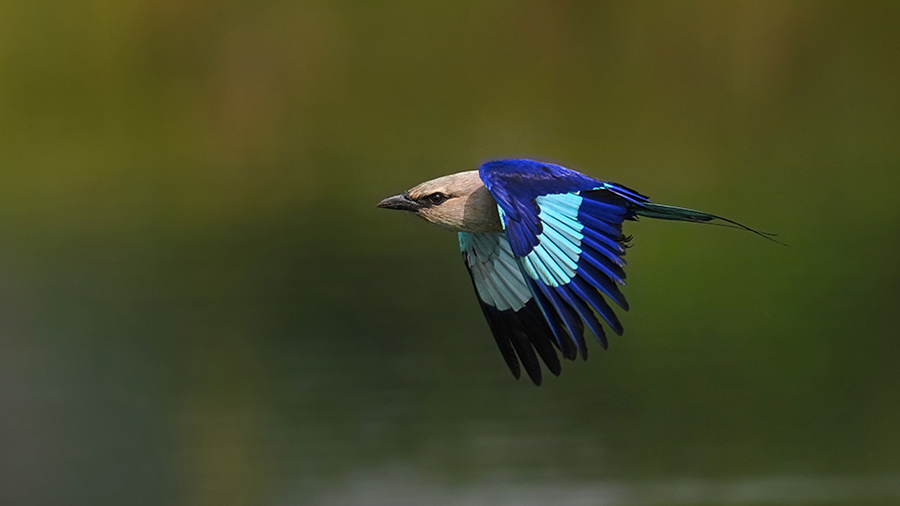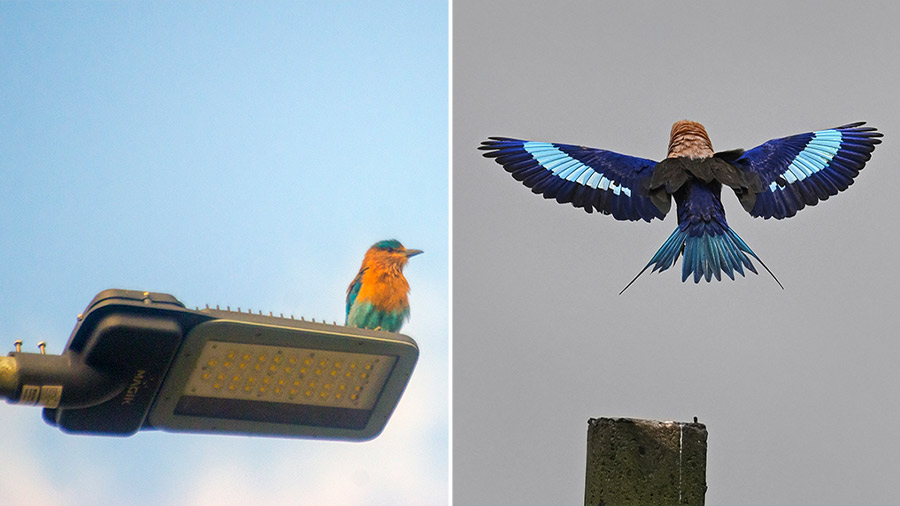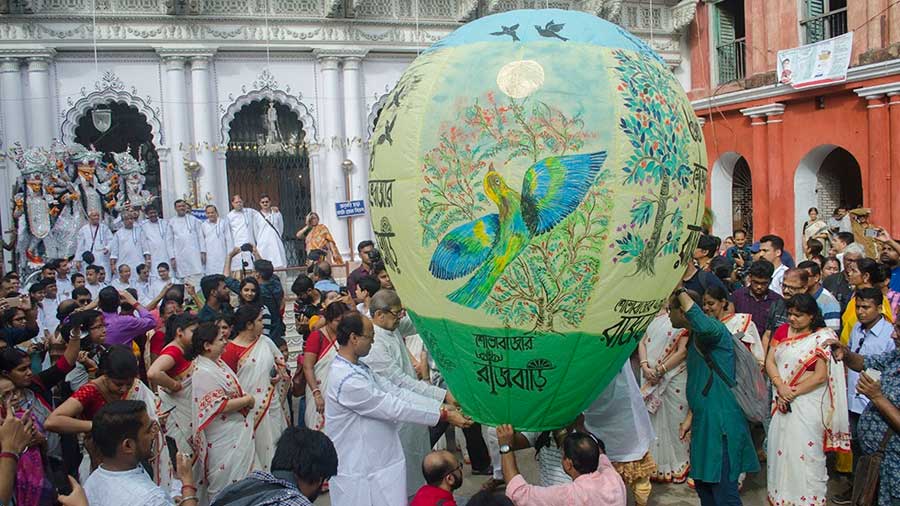This Dashami, when phanush or paintings of the neelkontho bird or the Indian Roller, now protected under the Wildlife Protection Act, send messages to Shiva about Durga’s return, African cousins of the species may be enjoying the autumn of Bengal.
Two Blue Bellied Roller (Coracias cyanogaster), a native of west Africa, were spotted in the Nepalgunj area near Joka a few months ago.

Indian Roller at Tadoba Apoorva Prakash, Wikimedia Commons
Dashami marks the end of Durga Puja. On this day, Ma Durga, along with her children, make their journey back home to the heavenly abode in Kailash. According to legend, the arrival of Durga is intimated to her husband by Neelkontho birds. For centuries, the traditional family households (bonedi baris) of Kolkata had followed the custom of releasing Neelkontho birds before the immersion of the idol.
Today, Neelkonthos are a protected species under the Wildlife Protection Act. Keeping the bird in captivity is illegal. To keep up with the tradition, the bonedi baris have come up with innovations like flying phanush (paper-made hot air balloons) with paintings of the Neelkontho birds. The Neelkontho refers to Indian Rollers (Coracias benghalensis) which are distributed throughout the sub-continent.
While the bonedi bari family members plan their innovation a different breed of Neelkontho is making inroads to the southern fringes of the city. Since the last couple of months, two Blue Bellied Roller (Coracias cyanogaster), a native of west Africa, have been spotted in the Nepalgunj area near Joka.

A ‘phanush’ with painting of ‘Neelkontho pakhi’ being released from Sovabazar Rajbari in 2019 Rangan Datta
The species has no record of migration and according to experts they are quite likely to be escaped captive birds. Keeping foreign birds as pets is legal in India. Foreign birds escaping from captivity is nothing uncommon. In recent times, exotic foreign birds like the Mute Swan (Baruipur, February 2022) and American Wood Duck (Bally, Howrah, August 2020) have been spotted on the fringes of Kolkata.
The Blue Bellied Roller, which is quite different from his Indian counterpart the Indian Rollers, was first spotted and photographed by Satyajit Das in mid-May 2023 and it was later confirmed to be the African version of the Neelkontho. Since May, the bird has been observed and photographed by dozens of bird lovers. These photographers have documented the birds feeding on local insects, having baths and living happily in a foreign country.
According to experts the two birds have adapted very well in the foreign environment. Since the Blue Bellied Roller is not dimorphic, so there are no visible differences between male birds and female birds, it is still not known if the birds are male and female. Experts opine that if they are of different sex they are quite likely to mate in the coming summer and produce offspring.
Interestingly, foreign species (both flora and fauna) adopting far off lands is quite a common phenomenon in the world of biodiversity. The pigeons seen all over the country have a Persian origin and arrived in India with the Persian merchants, nobles and even kings. They escaped captivity, adapted to the environment and bred at a rapid rate. They are termed as feral pigeons and the term feral refers to one that has escaped from a domestic or captive status and is living more or less as a wild.

Blue Bellied Roller at Nepalganj, near Joka Anjan Kumar Kundu
The water hyacinth or kochuripana is also feral and was introduced in India by Marian Hastings, wife of Warren Hastings, the first Governor-General of India.
In recent times, the Indian government has spent crores of rupees in bringing cheetahs from Africa and the species is struggling to adapt to the new environment of the Kuno National Park of Madhya Pradesh. But the feathered guest from Africa is having a grand time far from home and can soon call Kolkata their home.

